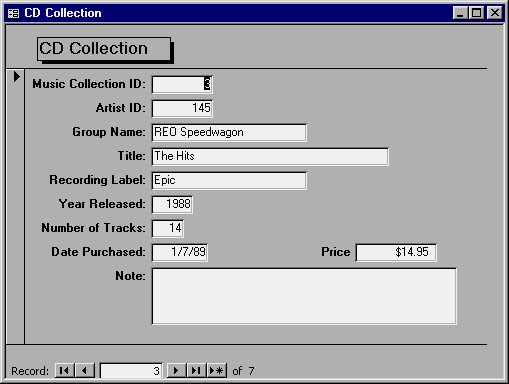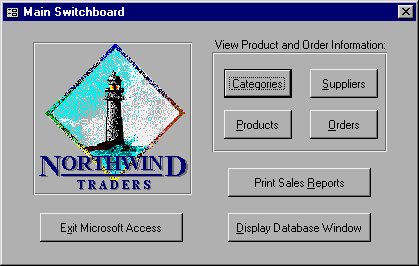Learn Access Now! Previous Section in Chapter 1 Next Section in Chapter 1 Chapter 2
Chapter 1: Getting Started with Access
(This is section 3 of 5 in this chapter)
Looking at Possibilities
As you start to use Access, you might wonder what sort of things you can do with the program. You already know that Access is a full-featured database program, designed to give you the capability to easily manage large amounts of data. But how can you put the program to work for you?
What Can You Do with a Database?
Earlier in this chapter, you learned that a database is simply a collection of related information. With this in mind, if you want, you can use a database to categorize virtually anything. In fact, you are only limited by your imagination.
Not everything is well-suited to being maintained with database management software such as Access. Two particular areas come immediately to mind:
- If the amount of data to be maintained is small, using a database is probably overkill. For example, you generally would not use a database to keep track of the pots and pans in your kitchen. Although you could do it, no real advantage is gained by using a database for such a simple task rather than employing a more traditional approach, such as a listing of all your kitchenware on a piece of paper.
- If information is only kept for a short period of time, the value of a database is questionable. For example, you probably wouldn't use a database to track phone messages unless you wanted to keep them for a very long period of time, perhaps for historical analysis.
What Does Access Allow You to Do?
Access lets you take your database ideas and translate them into reality. With Access, you can quickly and easily create databases that you can put to work right away. For example, you may want to develop a database to track your CD collection. Access makes this easy. You can define a simple database, or a relational database with your CDs in one table, the recording artists in another, the studios in another, and the individual CD tracks in still another. You can even have the database contain samples of the music! When you design your database, you can use Access to create input forms as shown in Figure 1-12.

Figure 1-12 CD Collection input form.
Input forms make maintaining the information in your database both quick and easy. While creating such a database may at first seem daunting, by applying the techniques described in this book, you can create databases like this in no time!
If you have special, not-so-common needs, Access provides development tools you can use to create your own full-blown applications. You can develop forms that use custom controls (buttons, lists, and the like), use special data validation rules, and even create Visual Basic for Applications programming code to process your data. You can attach this code to buttons and other controls on your forms. Such an application--created with Access--is shown in Figure 1-13.

Figure 1-13 A form with button controls.
The result is a custom application, all developed within Access. Projects such as these are not trivial in nature; indeed, they can take months to develop. But Access gives you the tools you need to manage the project and make the most of your development time.
Whatever your database needs, simple or complex, quick or evolutionary, Access provides the tools and environment you need to focus on more than just the data. Access helps you develop new ways to examine your data and work with it.
Learn Access Now! Previous Section in Chapter 1 Next Section in Chapter 1 Chapter 2